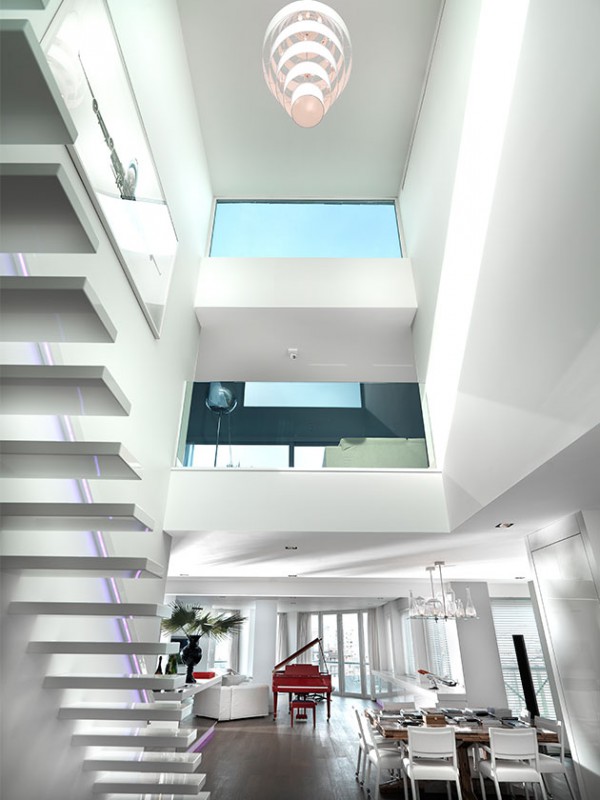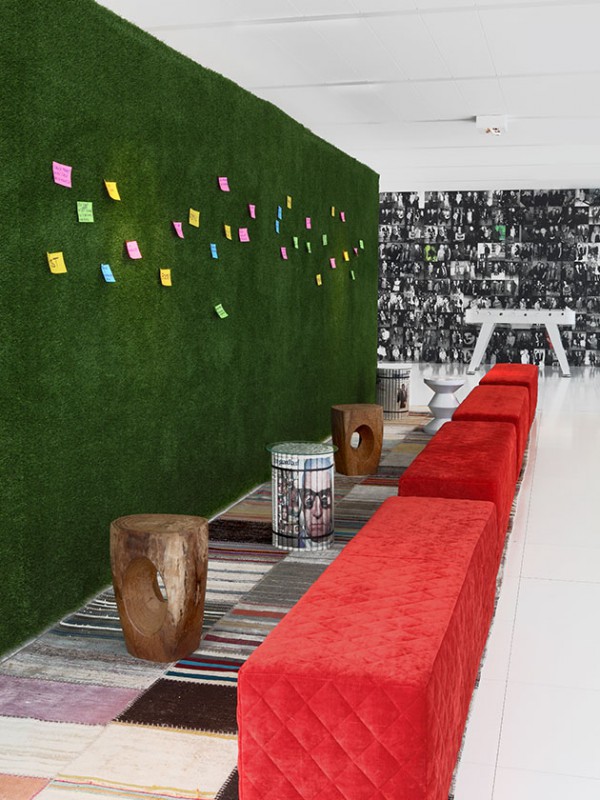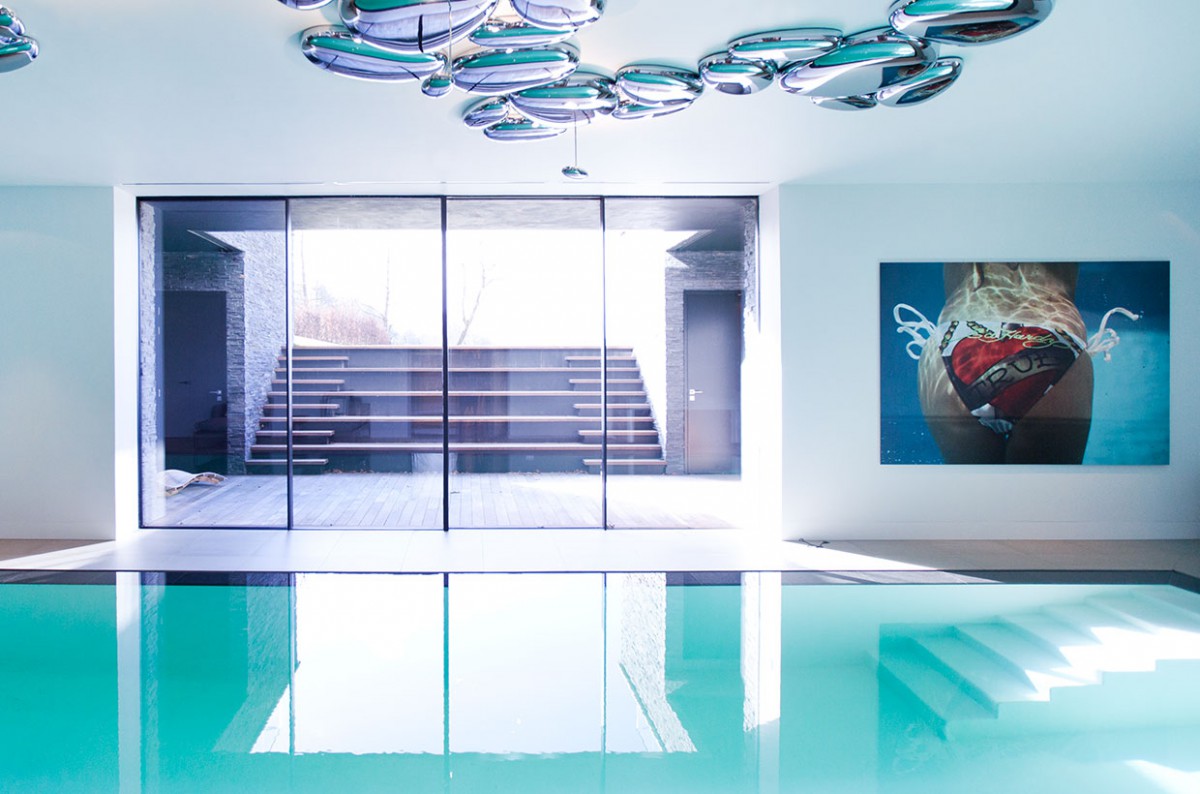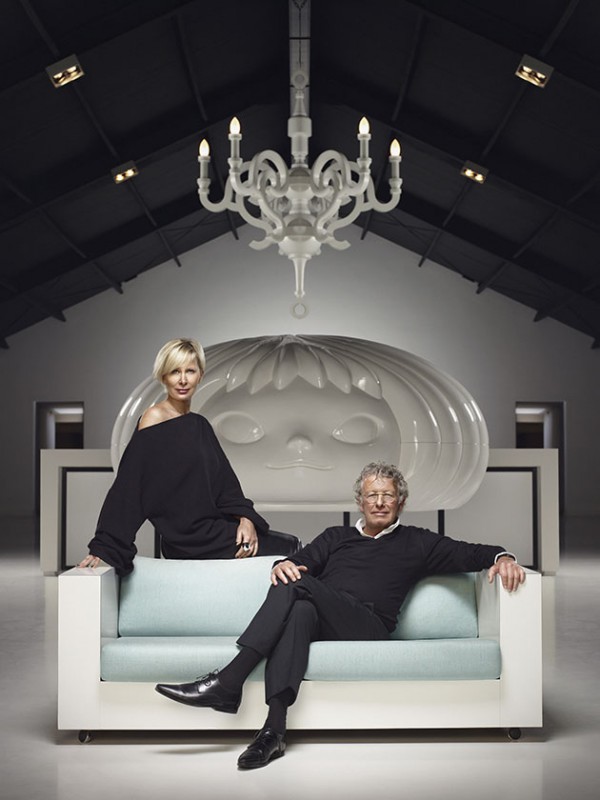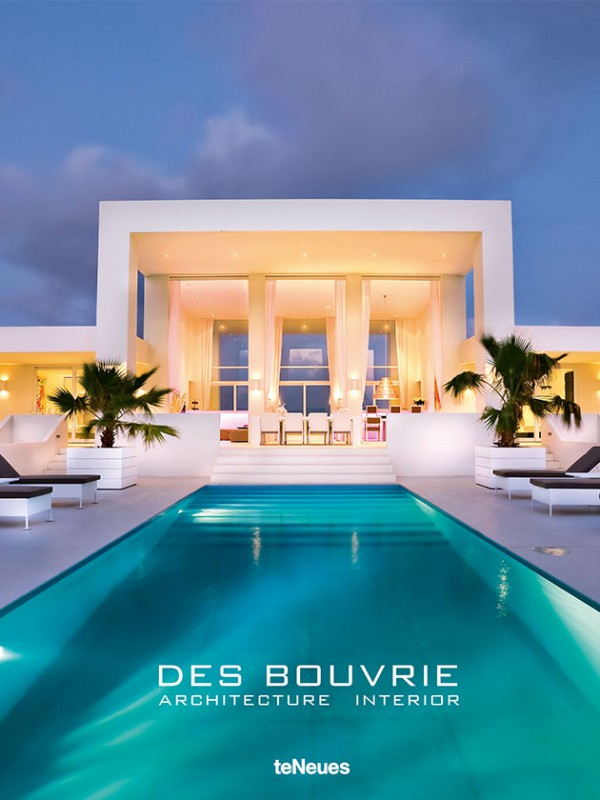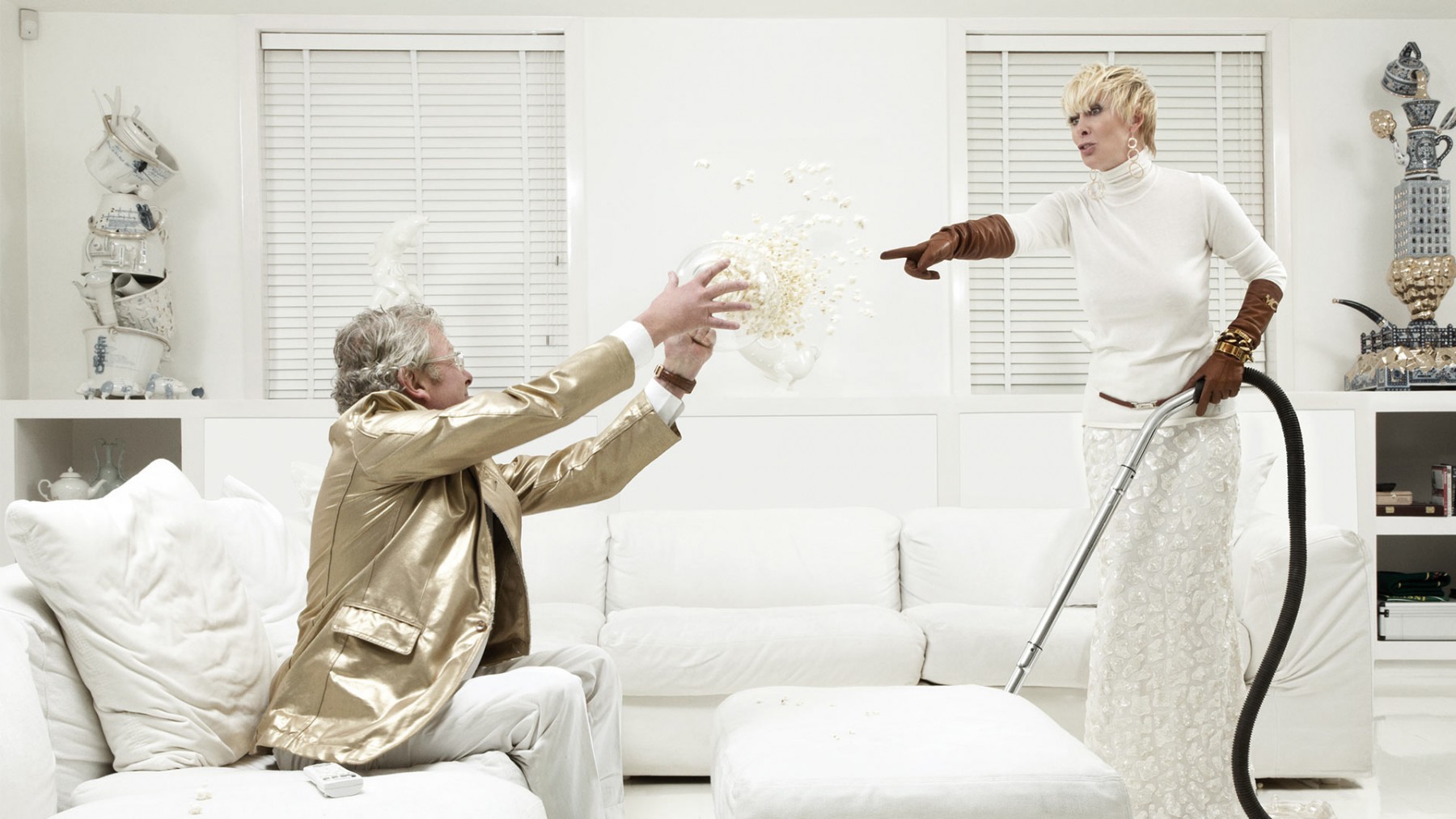Harmony in Contrast by Eva Müller-May | 4th March, 2016 | Personalities
For more than 25 years, Jan and Monique des Bouvrie have been combining their contrary styles to produce a unified whole. In the course of a creative process accompanied by fascinating debates, the Dutch architecture, design and interior design duo develop striking interior worlds all over the globe.
The square table in Jan des Bouvrie’s office is like his architecture: black and white, functional, clean. On it, there are two empty Mondrian-patterned ashtrays and a sketchbook. There are just a few black lines on the white paper – but they’re enough to conjure up the image of a couch. “I put my ideas down on paper and then discuss the details with my wife and our design team,” explains the Dutch architect and designer. All the walls in his office are white. One of them is adorned with a black-and-white photograph by Yves Marchand and Romain Meffre, showing the vaulted ceiling of Michigan Central Station. Flames flicker in the gas fireplace, and you feel entirely at ease.
“I’m dyslexic, extremely sensitive to visual stimuli and need emptiness to sort out the chaos in my head,” explains Jan des Bouvrie (73). “All I can tolerate is a little bit of design and a few carefully selected artworks. And they look best on white walls!” He’s been collecting art for as long as he can remember. He started out swapping his furniture creations for works by unknown artists. Today he is a notable private collector of contemporary art, each item is “a cherished piece.” “My wife’s office is totally different,” says the architect. “Monique is just as keen on art as I am, but she likes to surround herself with books, magazines, colors and various objects.” We meet the creative couple in “Het Arsenaal” in the medieval fortified town of Naarden, around 20 kilometers from downtown Amsterdam. Constructed in 1688, the building was owned by the military until 1987. The des Bouvries bought it in 1991, renovated it and set up their architecture and design agency here – along with their own showroom, a concept store dedicated to lifestyle, think tanks for interior design ideas, fashion, beauty and accessories, plus two restaurants.
Jan des Bouvrie lights a cigarillo. His wife is sitting to his left at the office table, which is perfectly square. Why this particular shape? “All the sides are identical, which makes everyone taking part in the conversation feel like an equal.” “Yes, but you’ve got the biggest and most comfortable chair,” teases Monique des Bouvrie. She moves one of the ashtrays parallel to a black line: “We’re both aesthetes, uncompromising perfectionists and obsessive about details, but we each have our own style. In that respect, we’re totally different!”
Jan des Bouvrie embarked on his career in 1961 after training at the Gerrit Rietveld Academy in Amsterdam. He soon became one of the most successful architects and furniture designers in the Netherlands. He believes that’s because he broke with the then customary furnishing style early on: “There were far too many different materials and rooms were often crammed full of ‘shit.’ Even back then, I used to tell my customers: Pick a nice sunny day, put all your stuff out in the garden, have a good look at it and only bring things that you really need or are really attached to back into the house.” He was, he says, one of the first to declare monochrome white interior design a style principle and use carefully selected artworks to add interesting accents. And if his clients were on a limited budget, he just painted the existing interior fixtures and kitchen furnishings white.
“Rietveld taught me to dispense with anything superfluous and rely on simplicity to perfect my design language.” The legendary designer is Jan des Bouvrie’s role model. But he was also influenced by Le Corbusier and Mies van der Rohe. And especially by van der Rohe’s glass pavilion in Barcelona: When he stands there looking out at the greenery, says Jan des Bouvrie, he is overcome by happiness. His definition of his architectural maxim leaves no room for ambiguity: He designs a private house from the inside out. With large expanses of glass. The staircase is always located at the center. There are no doors – except to the guest toilet. All the spaces flow into one another, and he uses just a few exquisite materials. The built-in elements and furnishings are mostly white. He positions beds or kitchen islands in the middle of the room (“Why on earth should a bed always be pushed up against the wall? And the kitchen units be fixed to the walls?”). He uses carefully selected art and lighting effects to create accents. His houses are white on the outside too, and always symmetrical, with black window frames. Wide canopies make the inside and outside of the building look as if they are a single entity. “That’s the recurrent theme in my work, my signature.”
In the 25 years or so since he started working with his second wife Monique, Jan des Bouvrie has never been tempted to abandon the idea of “less is more” – even though she wishes he would sometimes take more risks in his architecture. “But why?” asks her husband (a rhetorical question). “After all, we recognize great artists like Fontana or Chagall by their individual style too!” Monique des Bouvrie (former model, short blond hair, black leather pants, stylish fluffy vest) is in charge of interior design. “I like to surprise people. I’m always looking for something special.” “Ha,” interrupts Jan des Bouvrie, “that’s exactly what I mean. As part of a recent villa project, Monique even had glass etageres built on the back of the headrest on the client’s bed so she could display her designer shoes!” “Yes, but she loved it! Every shoe looks like a sculpture,” retorts Monique des Bouvrie. “I listen to what my clients have to say – I listen to them very carefully!” She would never do anything that was incompatible with their tastes, preferences or way of life, she says. In the meantime, she has her own clients, many of whom are friends. “Jan and I rarely share the same opinion. We cultivate our creative battles. And that’s why we manage to shake up ingrained mindsets” – an approach she describes as “thinking out of the box.”
The scenographies produced by this synergy of opposites are both remarkable and innovative. The couple work all over the world: in the Netherlands and Belgium, Moscow and the French Riviera, in Miami, India, Cost Rica and Curacao. She’s more prepared to take risks than he is, but never makes a room feel cluttered. Monique des Bouvrie brings “sex appeal” into a house, somebody once said of her interior design style. “I’d prefer to call it eclectic glamour,” she remarks. In the meantime, her husband has begun making compromises in his commercial buildings by using color – to spectacular effect. And he’s also getting used to the fact that his wife’s style is taking over their shared homes in Holland, St. Tropez and the Caribbean. “Monique is very crafty about it,” says Jan des Bouvrie. “Every so often she changes something. And she thinks I don’t notice.” EMM
